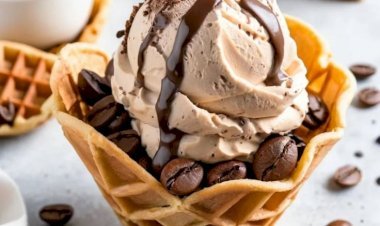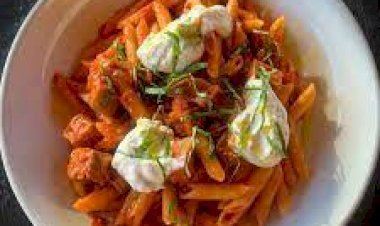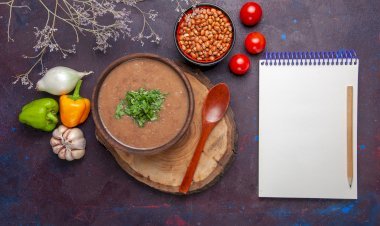Black Diamond Steak Guide 2025: Flavor, Cooking Tips & Where to Buy in the U.S.
Discover what Black Diamond Steak is, how to cook it, where to buy sirloin flap in the U.S., and why this flavorful, affordable cut is trending in 2025.

In 2025, American home cooks are increasingly choosing flavorful, affordable cuts of beef—and Black Diamond Steak is quickly becoming a standout favorite. Though it may not yet have the name recognition of ribeye or New York strip, this lesser-known cut is earning a loyal following thanks to its bold flavor, tender texture, and budget-friendly price tag. Once mainly used in restaurant kitchens and regional barbecue joints, it’s now showing up in local butcher shops, grocery stores, and home grills across the country.
Whether you're a seasoned steak lover or simply looking for a delicious alternative to expensive cuts, this guide will help you understand what Black Diamond Steak really is, where it comes from, how to cook it perfectly, and where to buy it in the U.S.
What Is Black Diamond Steak?

Image source: i.pinimg.com
Black Diamond Steak is not an official USDA-recognized cut but rather a popular nickname used by butchers and restaurants to refer to a flavorful section of beef taken from the bottom sirloin, specifically known as flap meat or sirloin flap.
This cut is also referred to as:
- Flap meat
- Sirloin flap
- Bavette steak (a French culinary term)
- Bottom sirloin tips
Shaped like a triangle and known for its coarse, open grain, this steak is prized for its ability to absorb marinades, cook quickly at high heat, and deliver a bold, beefy flavor. It has more richness than a typical top sirloin and is slightly leaner than a ribeye. When sliced properly against the grain, it becomes tender and juicy—ideal for everything from backyard grilling to steak sandwiches.
This cut has become especially popular in grilling circles across Texas, Missouri, Kansas, and other beef-loving states due to its affordability, flavor, and versatility.
Fact check: The term “Black Diamond” varies by region and butcher and is not a unique anatomical cut of beef—it’s a marketing term used for flap meat.
Read: If you're planning a full dinner menu, pair your grilled Black Diamond Steak with a rich pasta dish like this Creamy Chicken Penne Vodka Pasta Recipe: Easy 30-Minute U.S. Dinner in 2025—a perfect combination of bold steak and smooth, creamy comfort.
Why Is It Called “Black Diamond”?

Image source: i.ytimg.com
The name “Black Diamond” isn’t an official term—it’s more of a descriptive nickname used by some butchers and restaurants. It likely originates from two key characteristics:
1. The Dark Sear (Maillard Reaction)
When cooked over high heat, this steak develops a rich, dark crust due to the Maillard reaction—a chemical process that occurs when proteins and sugars in the meat brown and caramelize. This deep, slightly crisp surface can resemble the glimmering dark appearance of a black diamond, especially when paired with the steak’s natural marbling and bold look.
2. Marketing and Menu Appeal
"Black Diamond" also serves as a marketing name—used to make this lesser-known cut sound more premium and distinctive. While the actual cut is most often sirloin flap or flap meat, calling it “Black Diamond” on menus or in butcher shops helps it stand out from other economical cuts.
Note: Despite the elegant name, the anatomical cut is identical to flap meat. The difference lies in presentation and branding, not in structure or source.
Flavor, Texture & Marbling: What to Expect from Black Diamond Steak

Image source: i.pinimg.com
|
Feature |
Details |
|
Flavor |
Rich, beef-forward taste with a bold umami profile. Comparable to skirt or flank steak but often more balanced when properly marinated. |
|
Texture |
Coarse grain with visible muscle fibers. Slightly chewy by nature but becomes tender when sliced against the grain. |
|
Marbling |
Moderate intramuscular fat, especially in USDA Choice cuts. Provides juiciness and helps prevent dryness during high-heat cooking. |
Pro Tip:
To ensure tenderness, always slice Black Diamond Steak against the grain. This shortens the muscle fibers and reduces chewiness—especially important given its coarse texture.
USDA Grades & Quality of Black Diamond Steak
Image source: encrypted-tbn0.gstatic.com
In most U.S. grocery stores and online butcher shops, Black Diamond Steak is typically sold under USDA Select or USDA Choice labels. These labels reflect the level of marbling (intramuscular fat), which directly impacts tenderness, juiciness, and flavor.
USDA Select
- Leaner cut with minimal marbling
- Best suited for marinating before cooking
- Ideal for budget-friendly meals that still deliver good beef flavor
- Slightly firmer texture compared to higher grades
USDA Choice
- Contains moderate marbling, offering more tenderness and richer taste
- A great option for grilling or pan-searing without marinating
- Balances quality and affordability, making it a top choice for home cooks
Tip: If you plan to cook the steak quickly over high heat (e.g., grilling), USDA Choice is preferred. If you’re planning a long marinade or slow cooking, USDA Select is a cost-effective option.
States like Texas, Nebraska, and Kansas, which lead the nation in beef production, often offer fresher and more competitively priced sirloin flap cuts due to proximity to major meatpacking facilities.
Source: USDA Beef Grading Standards – Agricultural Marketing Service
1. Grilling Black Diamond Steak (Best for Bold Flavor)

Image source: cdn.thefreshmancook.com
Grilling is one of the best ways to bring out the rich, beefy flavor of Black Diamond Steak. Because of its grainy texture and moderate marbling, high heat helps create a crisp crust while keeping the inside juicy and tender.
Step-by-Step Instructions:
- Preheat the Grill
Set your gas or charcoal grill to high heat, around 450°F to 500°F. Let it fully preheat for at least 10–15 minutes to ensure a proper sear. - Prepare the Steak
- Pat the steak dry with paper towels to remove excess moisture.
- Lightly coat both sides with olive oil.
- Season generously with kosher salt and freshly ground black pepper.
- Optional: Add garlic powder or smoked paprika for extra flavor.
- Grill the Steak
- Place the steak on the hot grill.
- Cook for 3–4 minutes per side for medium-rare (internal temp ~130°F).
- Use tongs (not a fork) to avoid piercing the meat and losing juices.
- Let It Rest
After grilling, transfer the steak to a cutting board and let it rest for 5–7 minutes. This allows the juices to redistribute, keeping the meat moist and flavorful. - Slice Properly
Identify the direction of the grain (muscle fibers) and slice against the grain for maximum tenderness.
Pro Tip:
For extra depth, toss a handful of mesquite or hickory wood chips on the coals (or use a smoker box in gas grills). The added smokiness pairs perfectly with the steak’s bold profile.
2. Pan-Searing (Perfect for Small Kitchens)
Image source: encrypted-tbn0.gstatic.com
Pan-searing is a quick and flavorful way to cook Black Diamond Steak—especially if you don’t have access to a grill.
Steps:
- Heat a cast-iron skillet over high heat until it's almost smoking. This ensures a strong sear.
- Pat the steak dry with paper towels, then season with salt and pepper.
- Add 1 tbsp olive oil to the pan, then carefully place the steak.
- Sear for about 3 minutes per side without moving the steak. Let the crust form.
- During the last minute of cooking, add 1 tbsp butter, a crushed garlic clove, and a sprig of rosemary. Tilt the pan and use a spoon to baste the steak with the melted butter.
- Remove the steak, let it rest on a cutting board for at least 5 minutes.
- Slice thinly against the grain for best tenderness.
Why it works: The hot skillet delivers a flavorful crust, and the butter-basting adds richness. This method is ideal for home cooks in apartments or condos without outdoor grilling access.
3. Sous-Vide + Sear (Precision Cooking for Perfect Doneness)
Image source: encrypted-tbn0.gstatic.com
Step-by-step:
- Set your sous-vide water bath to 130°F for medium-rare doneness. (Adjust to 135°F for medium.)
- Season the steak with salt, pepper, and herbs. Vacuum seal in a sous-vide bag or use a freezer-safe zip-top bag with the water displacement method.
- Cook for 1.5 to 2.5 hours. This range ensures the connective tissue breaks down without overcooking.
- Remove the steak, pat it completely dry with paper towels.
- Sear in a ripping-hot cast iron skillet with a small amount of high smoke point oil (like avocado or canola). Sear each side for 45–60 seconds until a crust forms.
- Optionally, add a knob of butter, garlic, and thyme during the last 30 seconds for aromatic finishing.
Ideal for consistent results with minimal babysitting. Sous-vide is especially useful for urban cooks in NYC, LA, and Chicago using premium online butchers like Crowd Cow or Porter Road, ensuring restaurant-quality meat delivered to your door.
Also Read: If you love cooking meats at home, don’t miss our guide on Homemade Canadian Back Bacon Recipe – Cure, Smoke, and Slice Like a Pro. It’s a great way to level up your smoking skills with delicious results.
Marinades Americans Love for Black Diamond Steak
Image source: encrypted-tbn0.gstatic.com
Because of its rich, beefy flavor and open grain, Black Diamond Steak takes especially well to bold marinades. Whether you're grilling in Texas or pan-searing in California, a good marinade enhances both tenderness and taste. Here are three popular regional-style marinades that home cooks across the U.S. swear by:
|
Marinade Style |
Key Ingredients |
Popular Regions |
|
Tex-Mex Zest |
Lime juice, garlic, chili powder, cumin |
Arizona, California |
|
Smoky BBQ Rub |
Brown sugar, smoked paprika, mustard powder, onion powder |
Texas, Georgia, Missouri |
|
Asian-Inspired Glaze |
Soy sauce, sesame oil, grated ginger, honey |
Washington, Northern California |
Tips for Best Results:
- Use acidic ingredients (like lime or vinegar) to help tenderize the meat.
- Combine with oil and aromatics to boost moisture retention and flavor.
- Marinate for at least 6 hours—but overnight (8–12 hours) gives the most tender and flavorful results.
- Always refrigerate while marinating, and pat dry before cooking to achieve a crisp sear.
Note: Avoid adding too much salt early in the marinade process—especially if you’re using soy sauce—as it can draw out moisture.
Where to Buy Black Diamond Steak in the U.S. (2025)
Image source: encrypted-tbn0.gstatic.com
Since “Black Diamond Steak” is an informal nickname, you likely won’t see it labeled that way in stores. Instead, look for sirloin flap, flap meat, or bottom sirloin flap. These are the actual butcher terms used for this cut.
Here’s where you can find it in 2025:
Major Grocery Stores
- Costco
Offers bulk packs of USDA Choice flap meat, ideal for grilling or freezing in portions. Availability may vary by region, so check with the meat department. - Whole Foods Market
Carries organic and grass-fed sirloin flap under their 365 or butcher counter selections. Ask the staff if it’s not visible in the meat case. - Kroger, Publix, Safeway
While it may not be pre-packaged, these stores often have sirloin flap behind the butcher counter. Don’t hesitate to request it directly—they may label it differently, such as "sirloin tips" or "beef flap."
Trusted Online Meat Retailers
- Crowd Cow
Ships pasture-raised sirloin flap steaks nationwide. Known for transparency in sourcing, including breed, diet, and farm origin. - Porter Road
Offers humanely raised, dry-aged sirloin flap that’s hand-cut by professional butchers. Great for shoppers looking for high-quality, small-batch meat. - Snake River Farms
Sells American Wagyu flap steaks, prized for their rich marbling and tenderness. Ideal for steak connoisseurs and premium grilling experiences.
Local Butcher Shops (Best for Fresh Cuts)
In beef-centric states like Texas, Missouri, Nebraska, and Georgia, independent butcher shops often carry sirloin flap—even if it’s not labeled. Walk in and ask specifically for “flap meat” or “bottom sirloin tips.”
Tip: Show a reference photo or recipe name (e.g., “grilled flap steak”) if the staff is unfamiliar with the term “Black Diamond.”
Where It’s Served in 2025: U.S. Restaurant Mentions

Image source: i.pinimg.com
- Saltgrass Steak House (Texas)
This popular Southern steakhouse chain is known for its mesquite-grilled meats and has introduced rotating specials featuring flap meat, often labeled as "Black Diamond Steak" in some Texas locations. It’s typically served grilled with house-made seasoning and sides like garlic mashed potatoes or green beans. - St. Louis BBQ Restaurants (Missouri)
Many local BBQ spots in St. Louis include grilled sirloin tips or flap steak as part of their beef platters or sandwiches. While the term “Black Diamond” may not appear on the menu, the cut is commonly used due to its strong beef flavor and ability to hold up well to smoky barbecue sauces. - Modern American Bistros (NYC, Los Angeles, Denver)
Trendy urban eateries and bistros in cities like New York, Los Angeles, and Denver are now incorporating sirloin flap in dishes such as steak frites, steak grain bowls, and gourmet wraps. These restaurants focus on high-flavor, value cuts and often list this steak under creative names or simply as “bavette.”
Restaurant mentions are based on 2024–2025 menu research and regional culinary trends. Availability and labeling can vary—call ahead or ask your server about cuts like sirloin flap or flap meat if “Black Diamond” isn't listed.
What to Serve With Black Diamond Steak
Image source: encrypted-tbn0.gstatic.com
Black Diamond Steak’s bold, beefy flavor pairs beautifully with both classic and creative side dishes. Whether you're grilling outdoors or cooking indoors, the right sides and sauces can elevate your meal into a memorable dining experience.
Recommended Side Dishes:
- Garlic Mashed Potatoes
Creamy mashed potatoes with roasted garlic add richness and comfort, perfectly balancing the steak’s deep sear and chewy texture. - Grilled Corn on the Cob or Asparagus
Grilled vegetables add a smoky sweetness that complements the meat. Corn brings a pop of sweetness, while asparagus offers an earthy contrast. - Macaroni and Cheese
A creamy, cheesy mac provides indulgence and works especially well for family-style meals or Southern-inspired plates. - Coleslaw or Classic Potato Salad
These chilled, crunchy sides bring a refreshing balance to the heat of grilled steak—ideal for summer cookouts.
Optional Sauces (for added flair):
- Chimichurri Sauce
This vibrant Argentine herb sauce made with parsley, garlic, olive oil, and vinegar adds a fresh, tangy contrast to the meat’s richness. - Peppercorn Cream Sauce
For a steakhouse-style twist, a creamy peppercorn sauce adds depth and luxury—great for date night or upscale home dining.
Tip: Serve with crusty bread and a bold red wine like Malbec or Zinfandel to complete the experience.
Black Diamond vs Other Popular U.S. Steak Cuts (2025 Comparison Table)
Image source: encrypted-tbn0.gstatic.com
|
Steak Cut |
Flavor Profile |
Texture |
Fat Content |
Average Price/lb (USD) |
Best Cooking Methods |
|
Black Diamond (Sirloin Flap) |
Bold, beefy, rich |
Slight chew; tender when sliced properly |
Moderate |
$8–$12 |
Grilling, pan-searing, slicing thin |
|
Flank Steak |
Strong, meaty flavor |
Tough if overcooked; best sliced thin |
Low |
$10–$14 |
Fajitas, stir-fry, broiling |
|
Ribeye |
Very rich, buttery taste |
Naturally tender; well-marbled |
High |
$16–$25 |
High-heat sear, cast iron, grilling |
|
Flat Iron |
Mild, beefy |
Exceptionally tender; fine grain |
Moderate |
$12–$18 |
Pan-sear, oven roast, sous-vide |
Key Notes:
- Black Diamond (Sirloin Flap) offers premium flavor at a mid-range price, making it an excellent value cut in 2025.
- Ribeye remains the gold standard for luxury and fat-rich steaks, but it's nearly twice the cost of sirloin flap on average.
- Flat Iron is often praised for its tenderness and consistent results in home kitchens.
- Flank Steak requires careful cooking and slicing but delivers great taste for Mexican and Asian dishes.
Always slice against the grain with all cuts to maximize tenderness.
Read More: Looking to balance your bold steak dinner with something sweet? Check out our list of 15 Colorful Desserts That Will Brighten Any Table in 2025 — perfect for adding a vibrant finish to your next meal.
Nutrition Facts for Black Diamond Steak (Per 4 oz Cooked Serving)
Image source: encrypted-tbn0.gstatic.com
|
Nutrient |
Amount |
Details |
|
Calories |
~180 kcal |
Based on lean USDA Choice cut, cooked without marinade |
|
Protein |
~28g |
Excellent source of complete protein |
|
Fat |
~6g |
Mostly healthy fats; varies by grade (Choice vs. Select) |
|
Carbohydrates |
0g |
Naturally carb-free unless marinated with sugar-based sauces |
|
Iron |
~15% DV |
Supports energy and red blood cell production |
|
Sodium |
Low |
Naturally low; sodium content increases with seasoning or marinades |
Diet-Friendly: Suitable for keto, paleo, gluten-free, diabetic, and high-protein diets when prepared without sugary marinades or sauces.
Note: Nutritional values can vary slightly based on grade (Select vs. Choice), cooking method, and whether the meat was marinated.
Common Mistakes to Avoid When Cooking Black Diamond Steak
Image source: encrypted-tbn0.gstatic.com
Even the best cut of meat can turn out disappointing if handled the wrong way. Here are the top mistakes to avoid when preparing Black Diamond Steak—and how to fix them:
1. Overcooking the Steak
Mistake: Cooking beyond medium-rare can make this leaner cut dry and chewy.
Fix: Aim for an internal temperature of 130–135°F (54–57°C) for medium-rare. Use a meat thermometer for accuracy. Avoid relying solely on guesswork or touch tests.
2. Skipping the Resting Time
Mistake: Slicing the steak immediately after cooking causes flavorful juices to spill out.
Fix: Let the steak rest for 5–7 minutes after cooking. This allows the juices to redistribute throughout the meat, keeping it moist and tender.
3. Cutting With the Grain
Mistake: Cutting along the muscle fibers leads to a chewy bite.
Fix: Always slice against the grain—perpendicular to the visible muscle lines. This shortens the fibers and makes each bite more tender and enjoyable.
4. Skipping the Marinade
Mistake: Cooking this steak without marinating can leave it tasting flat or tough, especially if it’s USDA Select grade.
Fix: Use a marinade with acid (like lime juice or vinegar), oil, and spices. Marinate for at least 6 hours, or overnight if possible. This tenderizes the meat and boosts flavor.
How to Identify Black Diamond Steak at the Butcher Counter

Image source: www.tasteofhome.com
Finding Black Diamond Steak at your local butcher or grocery store can be tricky, as it’s often labeled under its more technical names like sirloin flap or flap meat. Here's how to spot it:
- Triangular or irregular, flat shape – Unlike uniform cuts, it usually has a tapered end and uneven width.
- Long, visible muscle grain – The fibers run lengthwise and are clearly noticeable. This helps identify it and reminds you to cut against the grain when slicing.
- Slightly uneven thickness – Some parts may be thinner than others, which is normal for this cut.
- No clear “Black Diamond” label – Ask your butcher specifically for sirloin flap, flap meat, or bottom sirloin tips.
Pro Tip: Bring a photo of the cut from a trusted recipe website or butcher’s catalog. This helps avoid confusion with similar-looking cuts like flank or skirt steak.
Also Check: Whether you’re grilling for friends or prepping a weeknight dinner, Black Diamond Steak offers flavor without the fuss. Round off your meal with something light and fruity—our No Bake Blueberry Dessert Recipes You’ll Love in 2025 are a perfect make-ahead option.
Conclusion
Black Diamond Steak may not have the name recognition of ribeye or strip steak, but it's a standout choice for anyone who loves bold flavor without paying premium prices. As more home cooks and chefs discover its value, this cut is making its way into kitchens across the country—from backyard grills in Georgia to stovetop skillets in California.
What makes it shine? It's rich in taste, quick to cook, and ideal for marinades. And with the right prep—a good soak in seasoning, a high-heat sear, and a clean slice against the grain—you’ll turn this lesser-known cut into the star of your next meal.
If you're after a steak that’s big on flavor, easy on the budget, and perfect for everything from fajitas to steak sandwiches, Black Diamond Steak might just become your new favorite.
FAQs About Black Diamond Steak
Q1: Is Black Diamond Steak a real cut of meat?
No, it’s a nickname, usually referring to sirloin flap or bavette steak from the bottom sirloin.
Q2: Where can I find Black Diamond Steak in 2025?
Ask for sirloin flap at stores like Costco, Whole Foods, or local butchers, or order online from retailers like Crowd Cow and Snake River Farms.
Q3: Do I need to marinate it before cooking?
Yes, marinating tenderizes the meat, boosts flavor, and prevents dryness — overnight works best.
Q4: What’s the best way to cook this steak?
Grill, pan-sear, or sous-vide, then slice against the grain for maximum tenderness.
Q5: Can I freeze Black Diamond Steak?
Yes, it freezes well — just seal it properly and use within 4–6 months for best results.

















